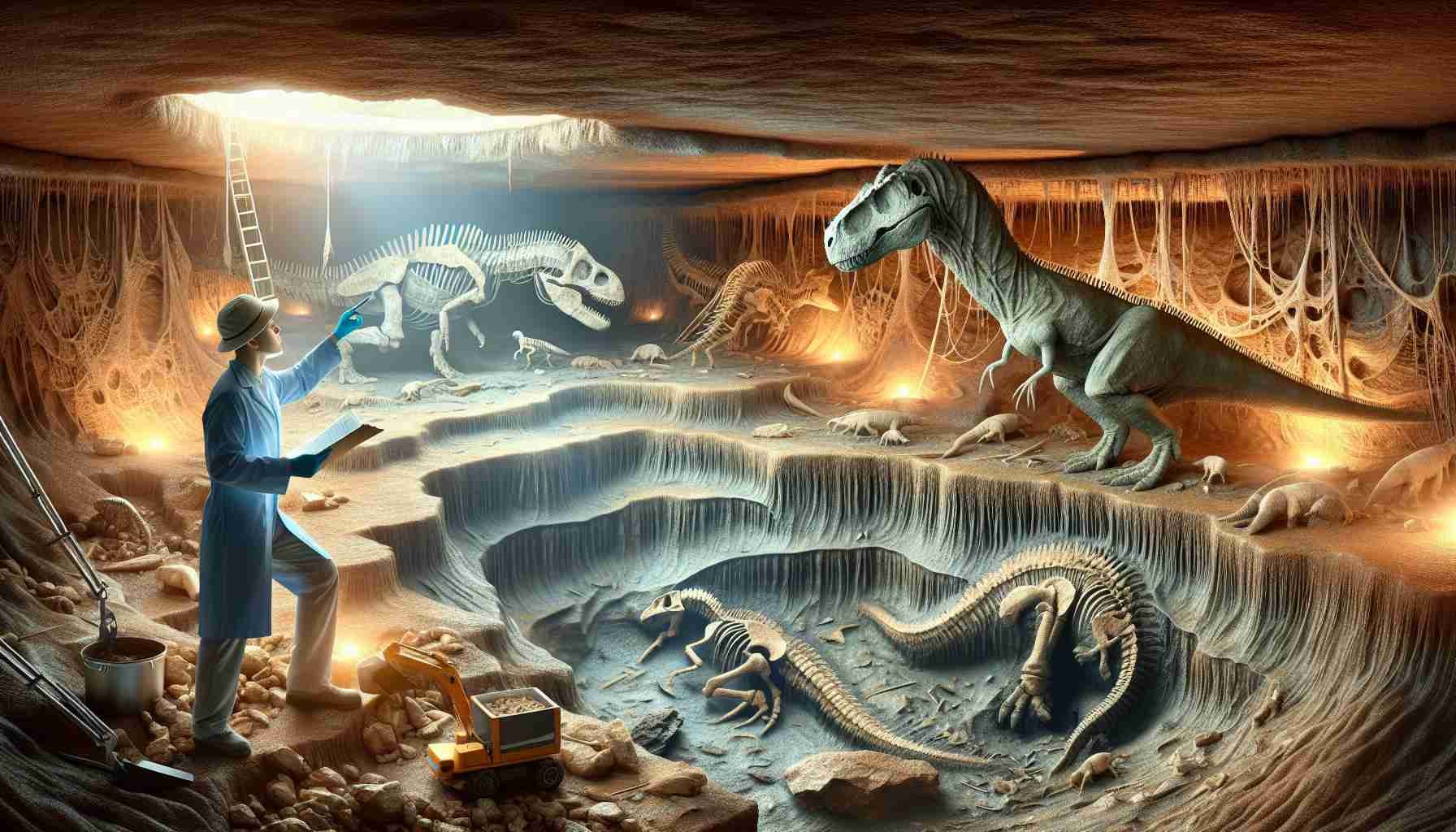
A New Perspective on Prehistoric Life
Unveiling a groundbreaking revelation, recent findings suggest that dinosaurs, including Fona herzogae, delved beneath the surface, challenging conventional beliefs. These burrowing creatures navigated subterranean realms, painting a vibrant picture of the Cretaceous era’s ecological diversity.
Unveiling the Enigmatic Fona Herzogae
Residing approximately 99 million years ago in the Utah landscape, Fona herzogae roamed a region teeming with bustling floodplains and diverse ecosystems. Delicately preserved fossils, meticulously excavated by experts from esteemed institutions, shed light on this mesmerizing dinosaur’s peculiar existence.
Physical Characteristics and Subterranean Clues
Contrary to their flamboyant counterparts, Fona possessed a modest physique but boasted distinctive features hinting at a subterranean lifestyle. With robust muscles, specialized bone structures, and a limb ratio tailored for excavation, Fona’s adaptation to burrowing activities became increasingly apparent.
A Mythological Tribute
Drawing inspiration from Chamorro folklore, Fona’s nomenclature intertwines indigenous narratives with scientific discovery. Symbolizing rebirth and creation, the genus name honors ancestral roots, while the species name pays homage to a stalwart figure in the realm of paleontology.
Unraveling the Enigma
While the enigmatic burrows of Fona remain undiscovered, analogous findings from related species suggest a hidden network beneath the prehistoric terrain. These subterranean passages, reminiscent of ancestral mythologies, underscore the intricate tapestry of life during the epoch of dinosaurs.
Exploring the Hidden World of Fona Herzogae
Deep within the annals of prehistory lies a captivating tale of Fona Herzogae, a dinosaur that dared to venture beneath the earth’s surface, defying traditional perceptions of these ancient creatures. As we delve further into the realms of paleontology, new revelations come to light, shedding a unique perspective on the subterranean world of dinosaurs.
Uncovering Prehistoric Mysteries
One of the key questions that arise when studying Fona Herzogae is the purpose behind its subterranean lifestyle. What drove these creatures to burrow deep into the ground, and what advantages did this behavior confer upon them? Research suggests that Fona may have sought refuge from predators, regulated body temperature, or even foraged for food in the hidden depths of the earth.
Challenges and Controversies
One of the primary challenges associated with understanding Fona Herzogae is the lack of direct evidence of its burrowing activities. While clues from its physical characteristics allude to a subterranean lifestyle, definitive proof in the form of burrows or other remnants remains elusive. This raises questions about the extent of Fona’s burrowing behavior and the accuracy of our interpretations based on limited fossil evidence.
Advantages and Disadvantages of Burrowing Adaptations
The advantages of a burrowing lifestyle for dinosaurs like Fona Herzogae are manifold. By seeking shelter underground, these creatures may have been able to evade predators more effectively, access new food sources, and create stable habitats. However, the disadvantages could include limited mobility above ground, potential risks from cave-ins or predators in the burrows, and challenges in terms of reproduction or social interactions in secluded environments.
Further Exploration and Research
To gain a deeper understanding of Fona Herzogae and its subterranean world, ongoing research efforts are essential. By studying related species with similar adaptations, exploring fossilized burrows, and employing advanced imaging techniques, scientists aim to unravel the mysteries surrounding these enigmatic dinosaurs and their underground habitats.
Related Links:
Palaeontological Association for Research and Education



